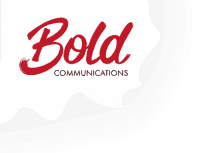Properly-written, clear workplace procedures will help you achieve a consistently high-quality product and keep your team safe.
If your instructions are unclear or open to multiple interpretations, things will go wrong. This will harm your product quality and could jeopardise your workers’ safety—both of which will ultimately cost you money.
Follow these five simple steps to reduce the risk of poor outcomes for your team and your business.
1. Know your audience
Write with your audience in mind. Don’t assume that the reader knows what you’re talking about. They’ll most likely have a wide range of ages, experiences, diverse cultures and languages, and different abilities to learn new things.
Approach the process carefully; you’re not trying to ‘dumb down’ the instructions you’re giving. You’ve already given this person a job based on a certain ability and experience. Write your workplace procedures with that in mind.
Don’t forget, those who have being doing it for years are often the ones most likely to ignore the written procedures, because they ‘know how it’s done’.
The process and methods may well have changed since they originally learnt them. Constant reinforcement of procedures is important to ensure consistency of product quality and workplace safety.
2. Break it down
Any large or complex process or project can always be broken down into smaller and smaller steps. Nobody ever said, ‘Let’s build a Large Hadron Collider,’ and then started construction the next day. Complex projects and procedures are always reduced to discrete parts that can be worked on and understood, and your processes are no different.
Every time you list the next step in the procedure ask yourself why, remembering that, ‘Because we’ve always done it that way,’ is completely the wrong answer! When you’ve broken the process down into small enough steps it’s much easier to train people and to recognise when the person you are training has ‘got it’.
3. Use photographs
Asking someone to read a procedure is a start, telling them how to do it helps get the message across, give them pictures and you’re most of the way there. When people read or hear information it’s likely they will only remember up to 10% of it three days later. Show them a picture alongside the same information and they will retain up to 65% of it three days later.
Always use photographs as an integral part of your procedures.
Make sure they’re clear and actually illustrate what you are trying to get across.
Use photographs to:
- Identify specific equipment
- Identify process steps
- To explain the setting up of the equipment
- Highlight specific important details of the procedure
- Highlight potential hazards
They must:
- Be clear enough to identify the equipment or process
- Be able to be photocopied in black and white without losing context or detail
- Not include background clutter
- Highlight key points using arrows and text
- Use text sparingly but with enough detail to identify the item or process step
4. Ask the experts
Knowledge of the process is critical. Talk to those doing these tasks often and find out how they do them and if they think they could be improved.
Ask those who know the process inside-out about which steps need to be specifically highlighted. These are the steps that if done wrong, will cause most harm—to the person carrying out the task or to the product being worked on.
Getting buy-in from those who will actually be doing the work is important. Consult with them and they’ll take ownership once the procedures are out there in use.
5. Test it
Try it out. Give the new procedure to the person who will be carrying out the task and get their feedback as to whether it works and makes sense. Modify accordingly. Repeat until it is right.
Record your workers’ competency in each procedure and audit regularly. These are live documents for use on a daily basis; not written, signed-off and left on a shelf.
Why all of this is important
You want to produce a product of consistent high quality. When you have written down how you can achieve it, you can pass on that information to anyone you employ and you will get the results you want.
When every step of every process is recorded and something does go wrong, you can easily pinpoint where mistakes were made and why.
You need to record this information for compliance to standards and legislation.
Your workplace procedures will ensure you achieve consistent quality, safety and compliance with one set of documents.
If this all sounds like a lot of work, that’s because it is, but the rewards are huge.
If you know you need to do it but don’t have time, call us. We’ll happily do it for you or discuss ways to help make the process easier in-house.

